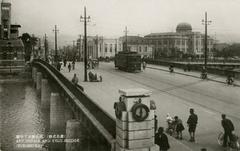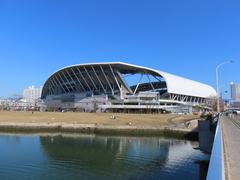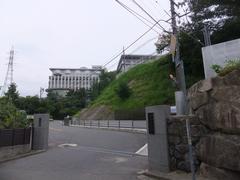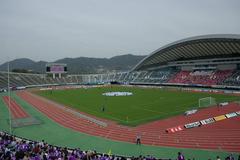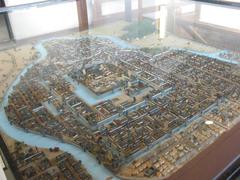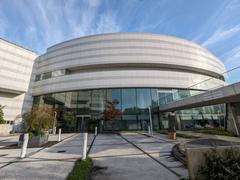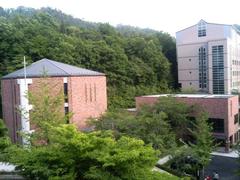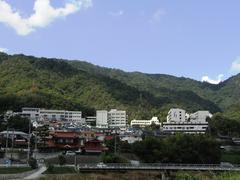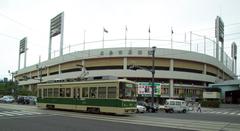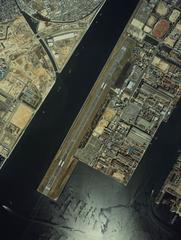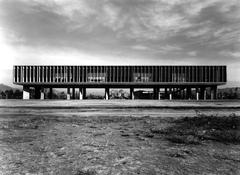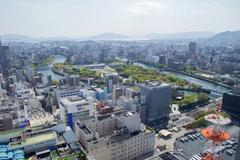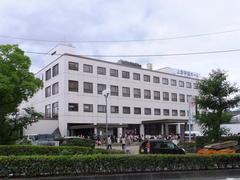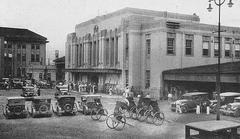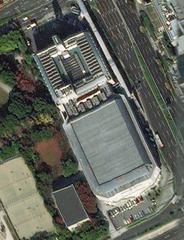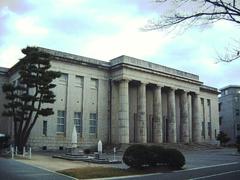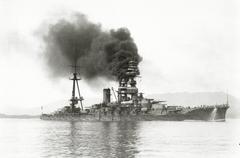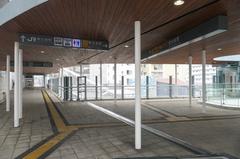Hiroshima Plant Visiting Hours, Tickets, and Historical Significance in Hiroshima, Japan
Date: 04/07/2025
Introduction: Hiroshima’s Dual Legacy of Resilience and Innovation
Hiroshima stands as a symbol of profound transformation, where tragedy is interwoven with remarkable resilience and forward-thinking innovation. This guide explores the Hiroshima Plant in both its forms—the living botanical memorials that flourished after the atomic bombing and the modern Mazda manufacturing plant—while delving into the city’s most significant historical sites. Visitors will discover Hiroshima’s journey from devastation to renewal, experiencing both its rich heritage and pioneering spirit (Japan Experience; Matcha Japan; Japan Activity).
Table of Contents
- Early History and Feudal Foundations
- Modernization and Military Significance
- The Atomic Bombing: August 6, 1945
- Exploring Hiroshima Historical Sites
- The Mazda Plant: Industrial Symbolism and Visitor Experience
- Hiroshima City Naka Incineration Plant
- Symbolism and Cultural Significance
- Practical Visitor Information
- Top Hiroshima Historical Sites and Visiting Hours
- Annual Events and Festivals
- Visitor Tips and Accessibility
- FAQ
- Conclusion
- Sources
Early History and Feudal Foundations
Hiroshima’s roots trace back to prehistoric times, with settlements at the mouth of the Ōta River during the Jōmon era. Its prominence grew in the late 16th century when Mōri Terumoto built Hiroshima Castle in 1589, establishing the city as a political and economic center (Japan Experience; Explore Hiroshima). During the Edo period, the Asano clan governed Hiroshima, fostering its prosperity as a castle town and commercial hub. By the late 19th century, Hiroshima had developed a strong manufacturing base, particularly in cotton and armaments, underpinning its strategic importance.
Modernization and Military Significance
The Meiji Restoration brought rapid modernization, transforming Hiroshima into a major urban and military center. The city expanded infrastructure, hosted the Hiroshima Prefectural Trade Promotion Hall, and played a vital military role during World War I. On the eve of World War II, Hiroshima’s concentration of military facilities and its role as a transportation hub led to its selection as the target for the world’s first atomic bombing (Japan Experience; Edudwar).
The Atomic Bombing: August 6, 1945
At 8:15 a.m. on August 6, 1945, the U.S. B-29 bomber Enola Gay dropped “Little Boy” over Hiroshima, detonating 600 meters above the city center. The explosion instantly killed an estimated 80,000 people, with devastation radiating throughout the city (Facts.net). The aftermath reshaped Hiroshima’s landscape and set the stage for its remarkable recovery.
Exploring Hiroshima Historical Sites
Hiroshima Castle
Known as “Carp Castle,” this reconstructed keep houses a museum on feudal history and offers panoramic city views.
- Hours: 9:00 AM – 6:00 PM (last entry 5:30 PM)
- Tickets: Adults ¥370, Children ¥180
- Location: 21-1 Motomachi, Naka Ward, Hiroshima
Peace Memorial Park and Museum
A global symbol of peace, the park commemorates atomic bomb victims and promotes nuclear disarmament.
- Park Hours: Open 24 hours
- Museum Hours: 8:30 AM – 6:00 PM (seasonal variations)
- Tickets: Museum ¥200 for adults; park is free
Shukkeien Garden
A tranquil Japanese garden, ideal for seasonal strolls and reflection.
- Hours: 9:00 AM – 6:00 PM
- Tickets: Adults ¥260, Children ¥100
Many sites offer accessibility features; consult official websites for details.
The Mazda Plant: Industrial Symbolism and Visitor Experience
Mazda’s Historical Roots
Mazda began as Toyo Cork Kogyo in 1920 and shifted to automobile manufacturing in the 1930s. After the atomic bombing, the Hiroshima plant became central to the city’s economic revival and Mazda’s emergence as a global brand (Trip to Japan).
Touring the Mazda Plant
- Location: Near JR Mukainada Station (3-1 Shinchi, Fuchu-cho, Aki-gun, Hiroshima)
- Tours: Weekdays, morning/early afternoon; advance reservations required via the Mazda official website
- Tickets: Free (reservation mandatory)
- Duration: ~90 minutes (includes museum exhibits and assembly line viewing)
- Accessibility: Wheelchair-friendly; English support available upon request
- Note: Photography restricted in certain areas
The Mazda Museum highlights the company’s evolution, technological innovations, and sustainability practices (Matcha Japan).
Hiroshima City Naka Incineration Plant
Visiting Hours and Tickets
- Ecorium Hours: 9:00 AM – 4:30 PM daily
- Admission: Free; no tickets needed for Ecorium
- Guided Tours: By appointment (Japanese only; English possible with prior inquiry)
- Address: 1-5-1 Minami-Yoshijima, Naka-ku, Hiroshima
Architectural Highlights
Designed by Yoshio Taniguchi, the plant features a striking glass-walled corridor (Ecorium) offering views of both the waste processing operations and Hiroshima Bay (Japan Experience).
What to Expect
- Ecorium: Learn about waste management through interpretive displays
- Observation Deck: Panoramic views of the Seto Inland Sea and city skyline
- Accessibility: Wheelchair accessible; elevators and ramps provided
- Food: No onsite dining; picnic areas available; local restaurants nearby (My Travel Buzzg)
- Photography: Allowed in public areas, restricted in operational zones
The facility processes approximately 400 tons of waste daily, converting it into energy and reducing landfill use. Educational workshops and events are held periodically; check the official website for schedules.
Symbolism and Cultural Significance
Plants as Living Memorials
Surviving trees—oleanders, camphor, and eucalyptus—are cherished as living memorials. The oleander is Hiroshima’s official flower, symbolizing resilience (Shmoop; Japan Starts Here). Informational plaques mark these trees in Peace Memorial Park and at Hiroshima Castle.
At the Children’s Peace Monument, visitors contribute origami cranes as acts of remembrance and hope (Trip to Japan).
Mazda: A Symbol of Progress
Mazda’s embrace of hybrid and electric vehicles exemplifies Hiroshima’s commitment to sustainability and innovation. The company supports local educational and cultural initiatives, reinforcing its role in the community (World History Journal).
Practical Visitor Information
- Reservations: Required for Mazda tours; not needed for the Ecorium public zone
- Language: Most facility tours are in Japanese; English materials/guides available at some sites
- Accessibility: Most major sites are wheelchair friendly and reachable via public transportation
- Etiquette: Fold origami cranes at monuments; maintain a respectful demeanor at memorials and religious sites
- Best Seasons: Spring and autumn for cherry blossoms and fall foliage
Top Hiroshima Historical Sites and Visiting Hours
| Site | Hours | Tickets |
|---|---|---|
| Peace Memorial Museum | 8:30 AM – 7:00 PM | ¥200 adults |
| Atomic Bomb Dome | Open 24 hours | Free |
| Hiroshima Castle | 9:00 AM – 6:00 PM | ¥370 adults, ¥180 children |
| Shukkeien Garden | 9:00 AM – 6:00 PM | ¥260 adults, ¥100 children |
| Orizuru Tower | 9:00 AM – 8:00 PM | ¥1,300 adults |
| Mazda Museum | Tours Tue–Sat (reservation) | Free |
| Incineration Plant Ecorium | 9:00 AM – 4:30 PM | Free |
| Mitaki-dera Temple | Open daily | Free |
| Okonomimura | 11:00 AM – 10:00 PM | Free entry (food extra) |
| Hondori Shopping Street | 10:00 AM – 8:00 PM | Free |
| Miyajima/Itsukushima Shrine | Varies (see ferry schedule) | Ferry & shrine ticket |
Annual Events and Festivals
- Peace Memorial Ceremony (August 6): Lantern floating and remembrance rituals
- Hiroshima Flower Festival (May): Parades and floral displays (Japan Activity)
- Hoozuki Matsuri (July): Summer festival with food and performances
Visitor Tips and Accessibility
- Public Transport: Hiroshima Electric Railway (streetcar), buses, and trains efficiently connect major sites
- Accessibility: Most attractions are wheelchair accessible
- Reservations: Book factory and museum tours in advance, especially during peak seasons
- Language: Download a translation app or bring a Japanese-speaking companion for detailed tours
- Photography: Follow posted signage regarding restrictions
Frequently Asked Questions (FAQ)
Q: How do I book Mazda Plant tours?
A: Advance reservations required via the Mazda official website. Admission is free.
Q: Are English tours available at Mazda or the incineration plant?
A: Mazda offers some English support; incineration plant tours are primarily in Japanese but English materials may be available.
Q: Which sites are free to enter?
A: Peace Memorial Park, Atomic Bomb Dome, Mitaki-dera Temple, Incineration Plant Ecorium, and Hondori Shopping Street.
Q: When is the best season to visit Hiroshima?
A: Spring (cherry blossoms, March–April) and autumn (October–November) for mild weather and natural beauty.
Conclusion: Embracing Hiroshima’s Spirit of Renewal and Innovation
Hiroshima’s story is one of resilience, renewal, and innovation. The Hiroshima Plant—both as living botanical memorials and as the Mazda manufacturing facility—serves as a testament to the city’s transformation and vision for the future. Exploring the city’s historical sites, participating in cultural traditions such as folding origami cranes, and witnessing sustainable industry up close, visitors become part of Hiroshima’s ongoing narrative of peace and progress.
For a richer experience, consider using the Audiala app for guided audio tours, explore our related articles, and follow us on social media for the latest travel updates.
Related Articles
- Top Hiroshima Historical Sites to Visit
- Mazda Museum: What to Expect
- Peace Memorial Park: A Visitor’s Guide
Visual Gallery
- Mazda Plant exterior – alt=“Mazda Factory Hiroshima Plant Exterior”
- Oleander flowers in Hiroshima Peace Memorial Park – alt=“Oleander flowers symbolizing hope in Hiroshima”
- Children’s Peace Monument surrounded by paper cranes – alt=“Children’s Peace Monument with origami cranes in Hiroshima”
Sources
- Japan Experience: Exploring Hiroshima Historical Sites
- Trip to Japan: Visiting the Hiroshima Plant and Historical Sites
- The Real Japan: Top Hiroshima Historical Sites and Visiting Hours
- Japan Experience: Hiroshima City Naka Incineration Plant Guide
- Matcha Japan: Mazda Museum and Factory Tour Information
- Japan Activity: Hiroshima Flower Festival
- World History Journal: Remarkable Hiroshima 2025
- My Travel Buzzg: Hiroshima Travel Guide
